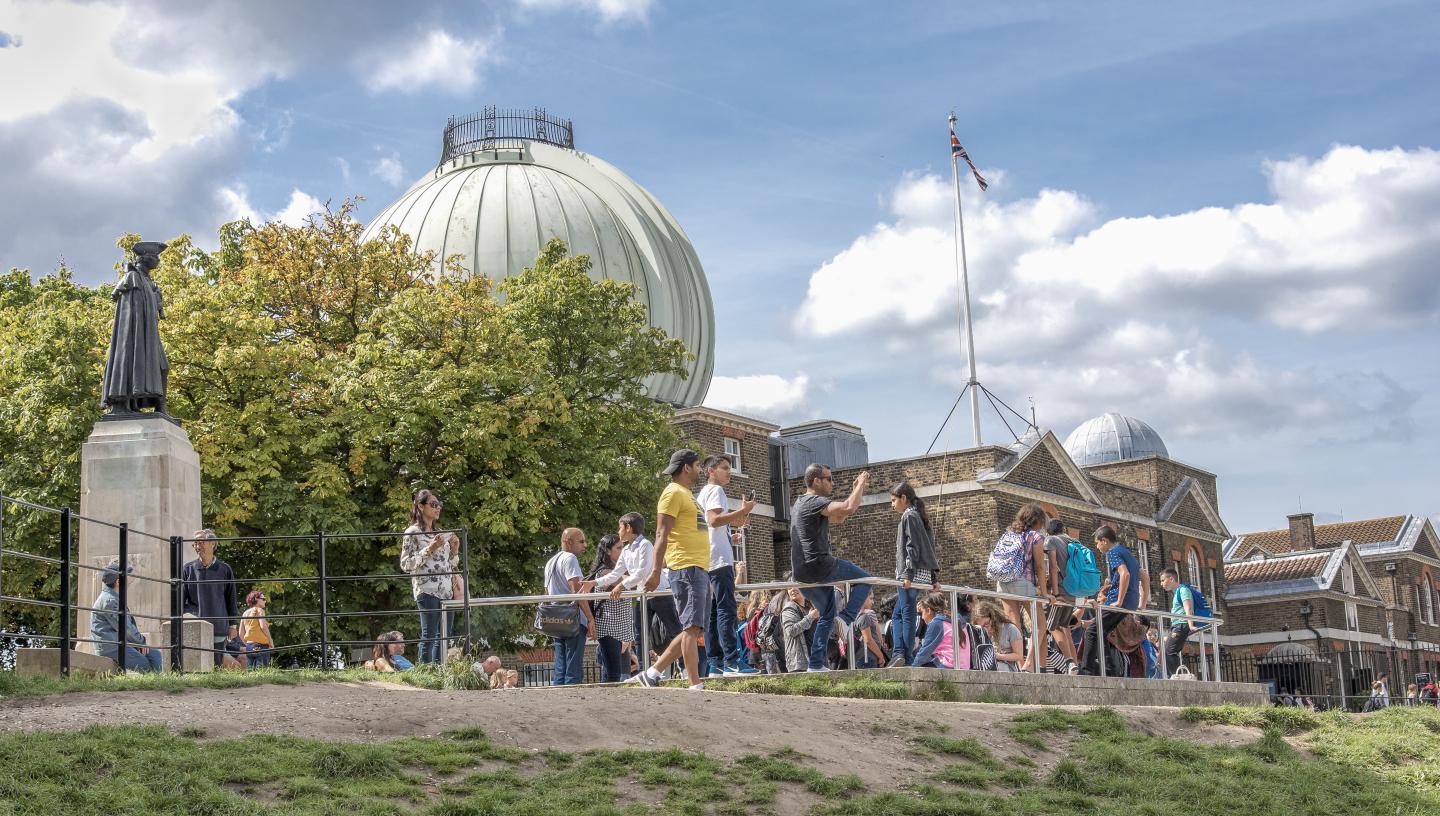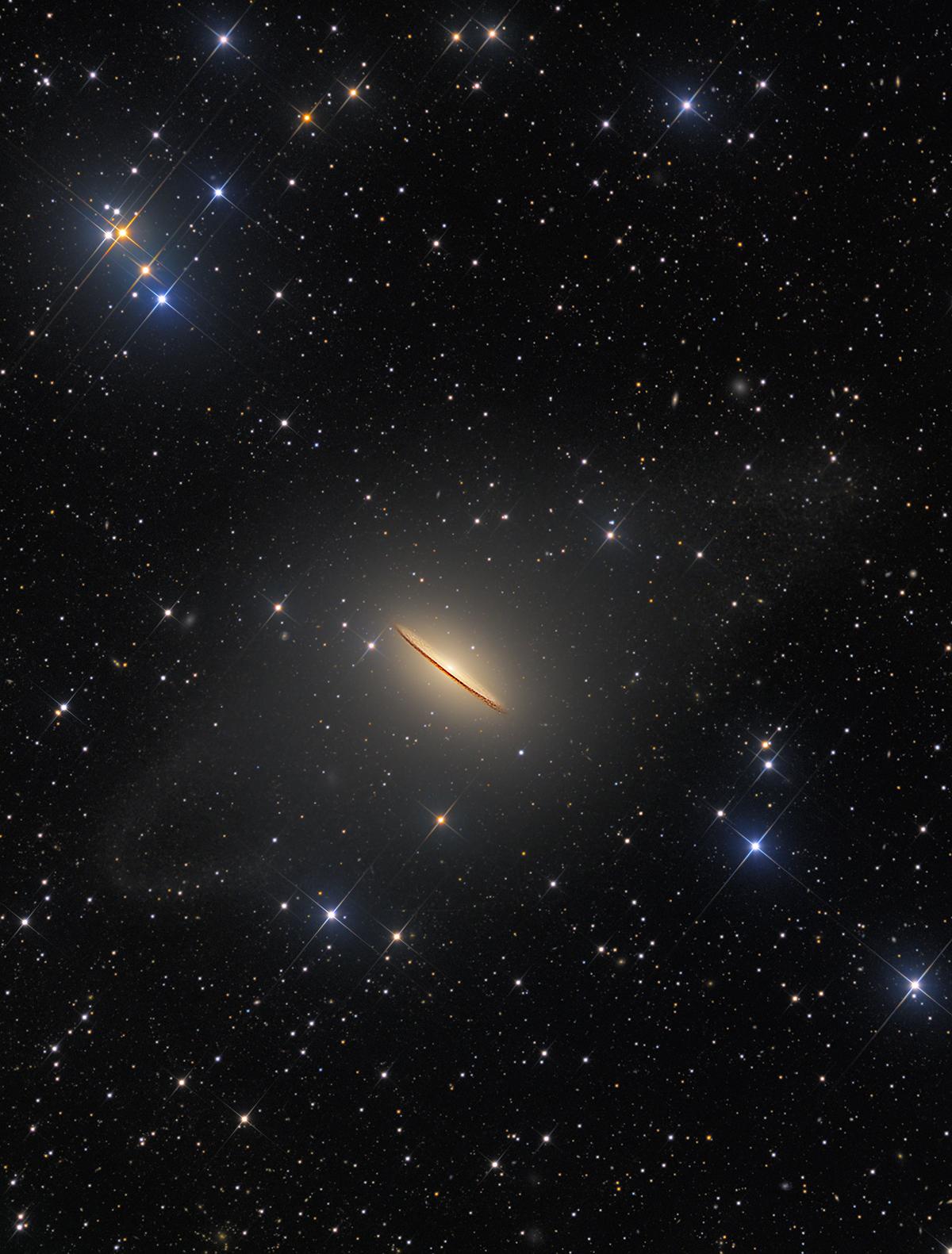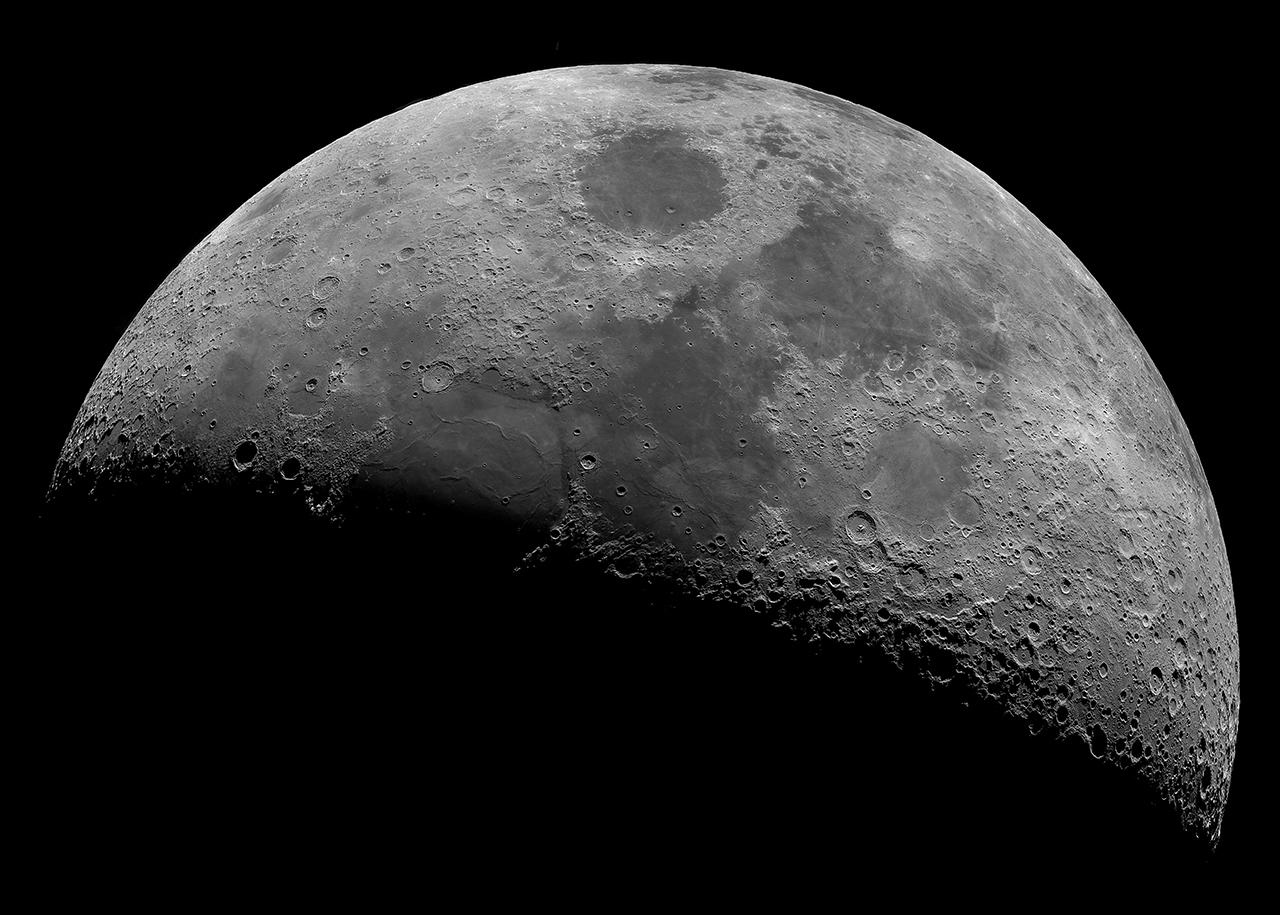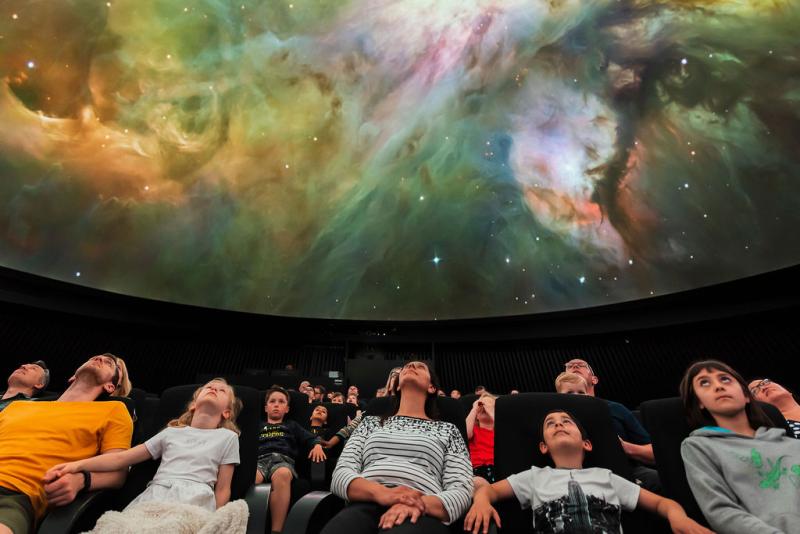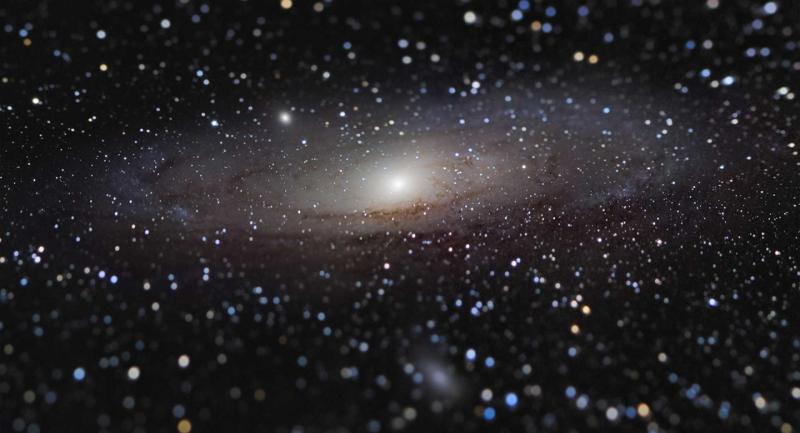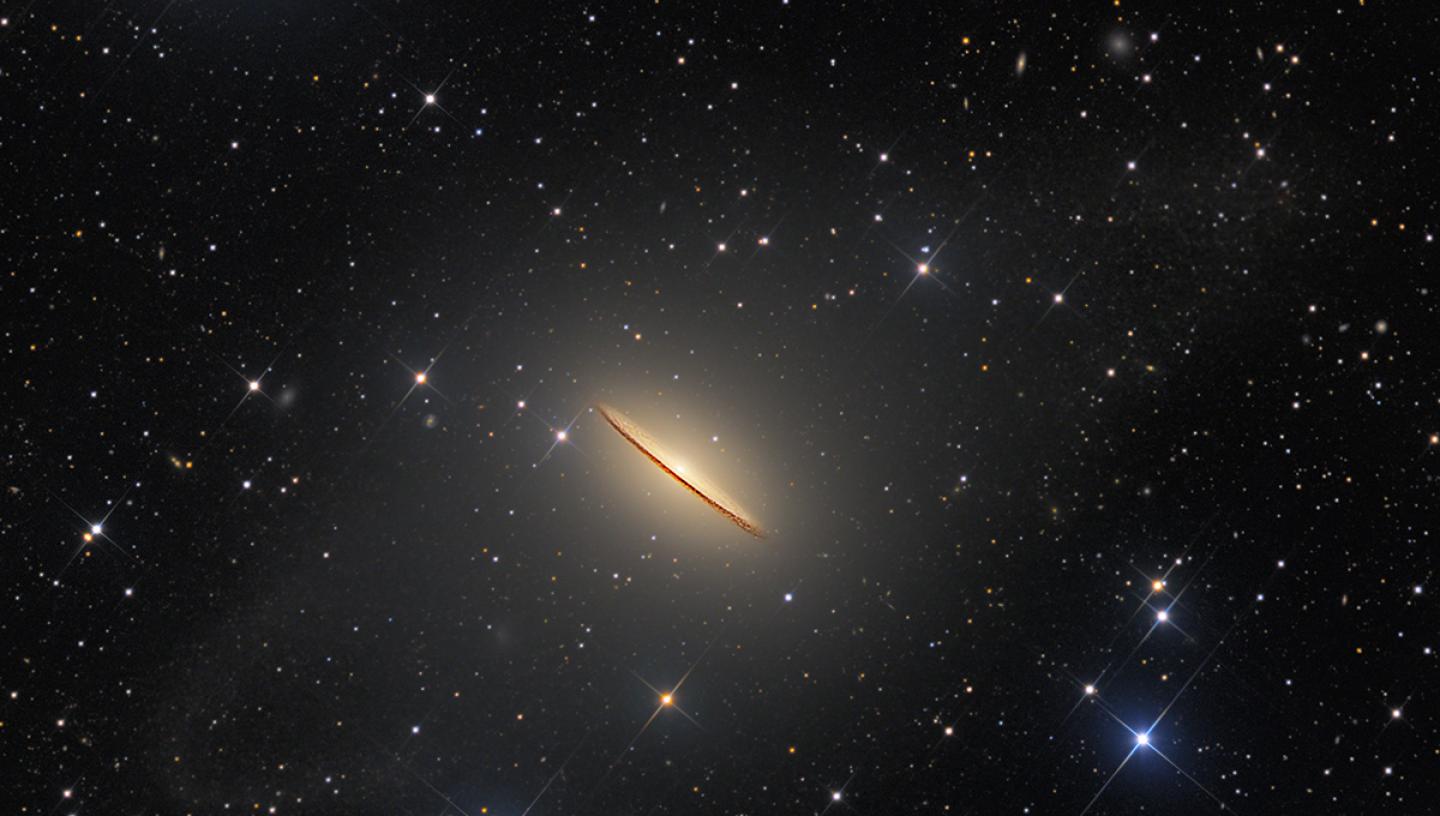
Discover what to see in May's night sky, including the dwarf planet Ceres, a meteor shower and a unique galaxy.
Top 3 things to see in the night sky in May
- Throughout the month – the dwarf planet Ceres is visible in Leo through a telescope
- 6 May – catch the peak of the Eta Aquariids meteor shower
- Throughout the month – look for the Sombrero galaxy with a pair of binoculars
(Details given are for London and may vary for other parts of the UK)
See June's night sky highlights
Look Up! Podcast
Subscribe and listen to the Royal Observatory Greenwich's podcast Look Up! As well as taking you through what to see in the night sky each month, Royal Observatory Greenwich astronomers pick two space news stories to talk about.
In May's episode, which you can listen to below, we discuss what a recently detected repeating radio signals from a relatively nearby planetary system might mean (spoiler alert - it's not aliens!) and then we talk about a gamma ray burst known as the BOAT - the Brightest Of All Time!
At the start of May, join us on Twitter (@ROGAstronomers) and tell us if you've ever seen a shooting star.
Coma Berenices, the only constellation named after a real historical figure
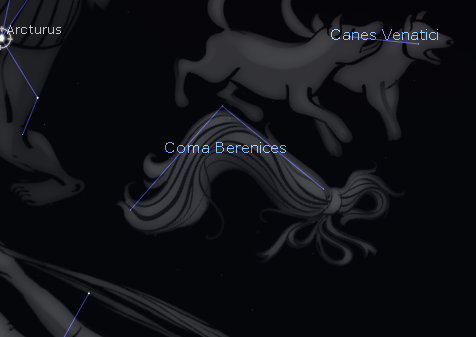
This small constellation was introduced during the Hellenistic period, but later forgotten as many astronomers who made maps of the night sky, including Claudius Ptolemy, didn't include it. Ptolemy described 48 constellations in his book Almagest in the second century, but considered the 3 stars of Coma Berenices to be a part of Leo. He called them “a lock”, or Plokamos in Latin.
Coma Berenices only became popular much later during the sixteenth century. Western astronomers started introducing it as an official constellation and referred to it as Cincinnus, “a lock of hair” in Latin. And finally Tycho Brahe, an influential Danish astronomer, noted Coma Berenices in his star catalogue in 1602, after which the constellation became trendy and widespread across Western Europe.
The story of this constellation starts with Berenice II of Egypt, a wife of Ptolemy III Euergetes, who vowed to sacrifice her long and beautiful hair for her husband's safe return from the Third Syrian War. Her prayers were granted and upon Ptolemy's safe return, Berenice cut her hair and placed it in the temple of Arsinoe II, her mother. But (un)surprisingly the next morning the hair was gone! Ptolemy's personal court astronomer then proposed that Aphrodite, goddess of love and beauty, acknowledged Berenice's sacrifice and placed her hair in the sky.
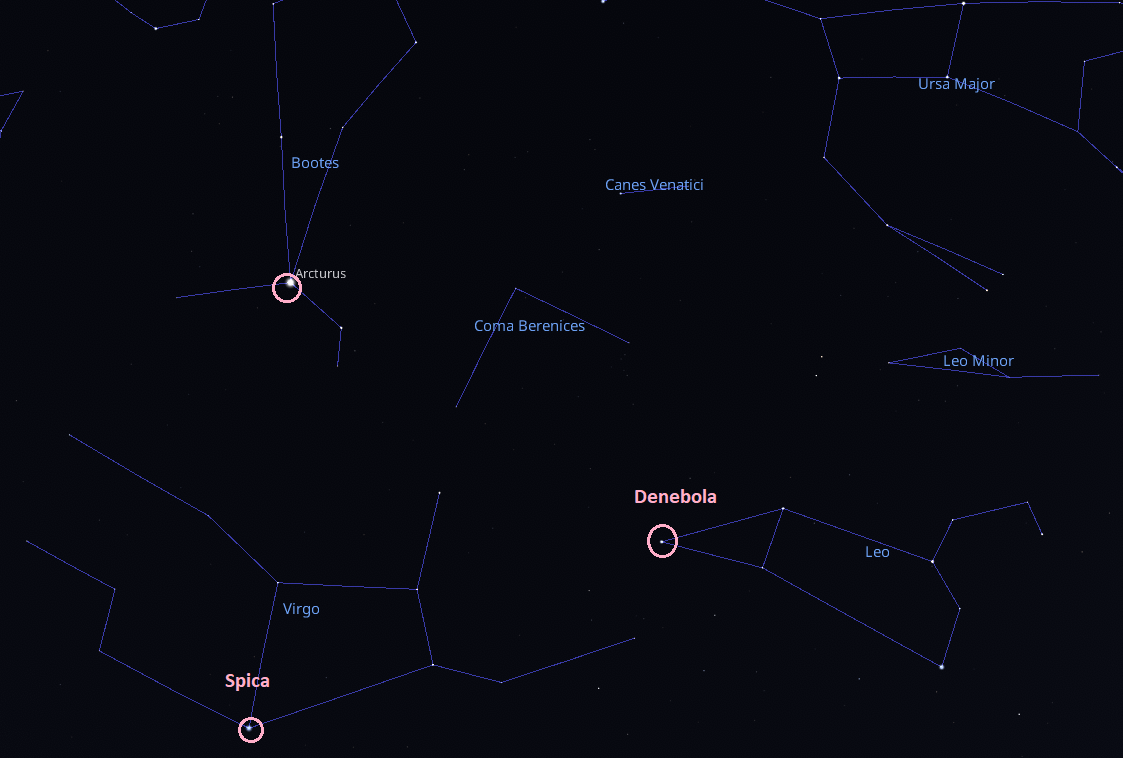
This constellation is small and none of the stars are bright enough to be seen from London due to light pollution. But you can easily spot Coma Berenices in a less light-polluted area! On the diagram above, three bright stars are marked that you can use to point you to Coma Berenices. These are Spica in Virgo, Denebola in Leo, and Arcturus in Boötes. Coma Berenices is halfway between Arcturus and Denebola, and opposite Spica.
The dwarf planet Ceres in Leo
Although Ceres is too faint to be spotted with the unaided eye, a stronger pair of binoculars or a telescope should do the trick. You can find Ceres by looking just east of the second brightest star in Leo, Denebola. Both Leo and Ceres are high up in the sky and visible throughout the whole month, but we recommend looking for Ceres after 8 May and before 23 May, when the Moon isn't too bright to get in your way. Ceres' magnitude will vary from 7.71 to 8.26 during the month.
The Eta Aquariids
In April we got to enjoy the Lyrids meteor shower, and in May another one awaits. The Eta Aquariids are active from 19 April to 27 May, but peak from midnight to dawn on 6 May, when a maximum of 50 meteors per hour are expected.
However, this meteor shower favours our readers in the Southern Hemisphere. Eta Aquariid meteors can be seen across the entire sky, but they appear to radiate from a point in the sky near Eta Aquarii, a star in the constellation of Aquarius.
For the Northern Hemisphere this constellation is below the horizon for much of the night, only rising at around 3 am. This means if you’re in the Northern Hemisphere, just before dawn is the best time to try and catch a glimpse of a shooting star, and you’ll most likely see them near the horizon. This year the Full Moon will also be present at the peak and will make the meteors even harder to spot, but you could give it a go.
This shower is a cosmic trace of Halley's Comet. When a comet passes close to the Sun, it leaves an icy dust trail behind. Earth sometimes crosses these trails, and the icy dust particles burn in our atmosphere, causing a meteor shower. Halley’s Comet itself is next going to return to the skies in 2061, and so you’re more likely to see one of these shooting stars than the comet itself any time soon, even if it is a tricky one to view!
Tips on how to watch a meteor shower:
-
Find a good stargazing spot without light pollution
-
Bring a sleeping bag, get warm and comfortable
-
You want to be able to see as much of the sky as possible, so a telescope isn’t going to be useful here as it only focuses on one tiny patch of the sky
Galaxy season begins!
Springtime in the Northern Hemisphere marks galaxy season! At this time of year, the location of the Earth in its orbit gives us an amazing view of some of the brightest galaxies visible through a telescope. This is exciting news for all astrophotographers as well as amateur astronomers looking for some more advanced targets to aim their telescope at.
The Sombrero galaxy, also known as M104 is a classic. It doesn’t require expensive equipment to be captured, and although galaxies are not the easiest targets in the deep night sky, this one is bright enough to be relatively easy to find. Through a telescope it resembles a Sombrero hat, hence the name.
Three bright stars in the proximity of the Sombrero galaxy are Spica (Virgo), Denebola (Leo) and Arcturus (Boötes). These three are often used to locate the galaxy as it can be found just west of Spica. But feel free to use any other stars as a guide, or a stargazing app, there are no official rules!
Jupiter visits the Southern Hemisphere
We got to enjoy Jupiter in the past few months here in the Northern Hemisphere, and now our readers from the south get to do the same. Jupiter will start gradually appearing at dawn in the east, where the Sun rises each morning. In the second half of May and onwards, Mercury will be visible to the unaided eye just below Jupiter as well.
Here are two main tips to help you tell a planet and a star apart:
-
Planets don’t twinkle, while stars do
- Planets are different colours in the sky, while most stars appear white. For example, Jupiter has a light creamy brown hue
The Moon's phases this month
Full Moon - 5 May (17:34)
Third Quarter - 12 May (14:28)
New Moon - 19 May (15:53)
First Quarter - 27 May (15:22)
Header image: Majestic Sombrero Galaxy by Utkarsh Mishra, Michael Petrasko and Muir Evenden - winner of the 'Galaxies' category in Astronomy Photographer of the Year 2022
Never miss a shooting star
Sign up to our space newsletter for exclusive astronomy highlights, night sky guides and out-of-this-world events.
You may also be interested in
